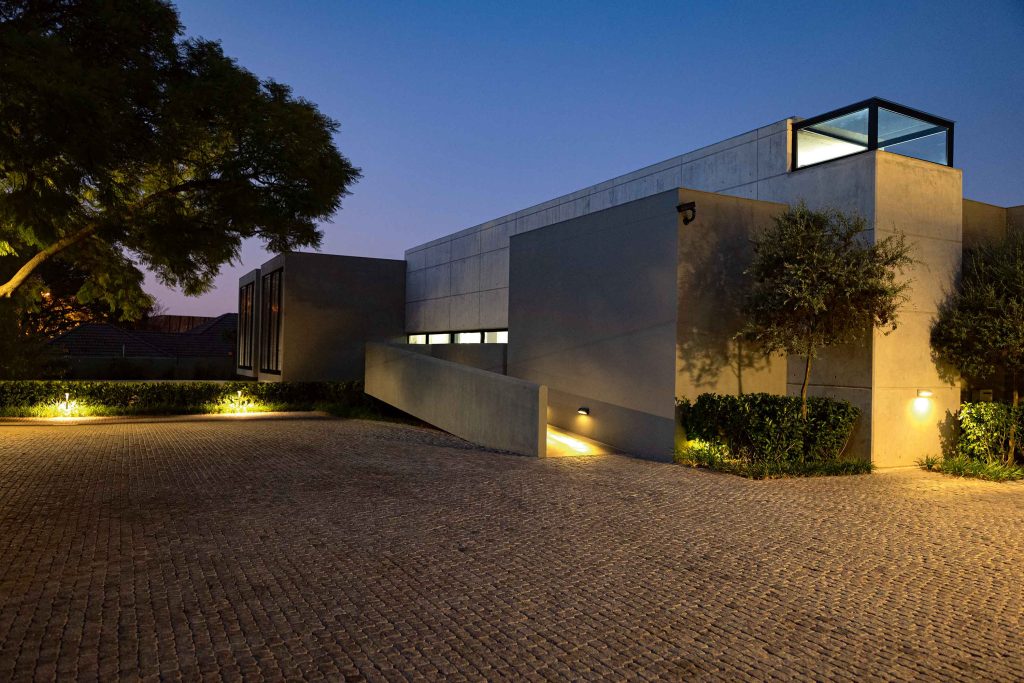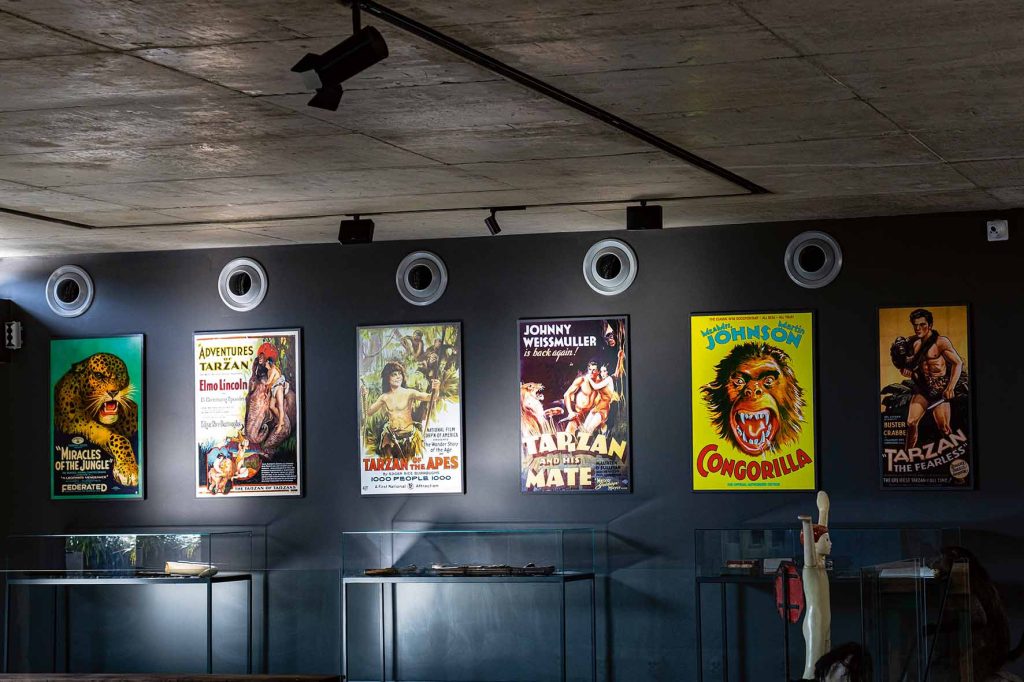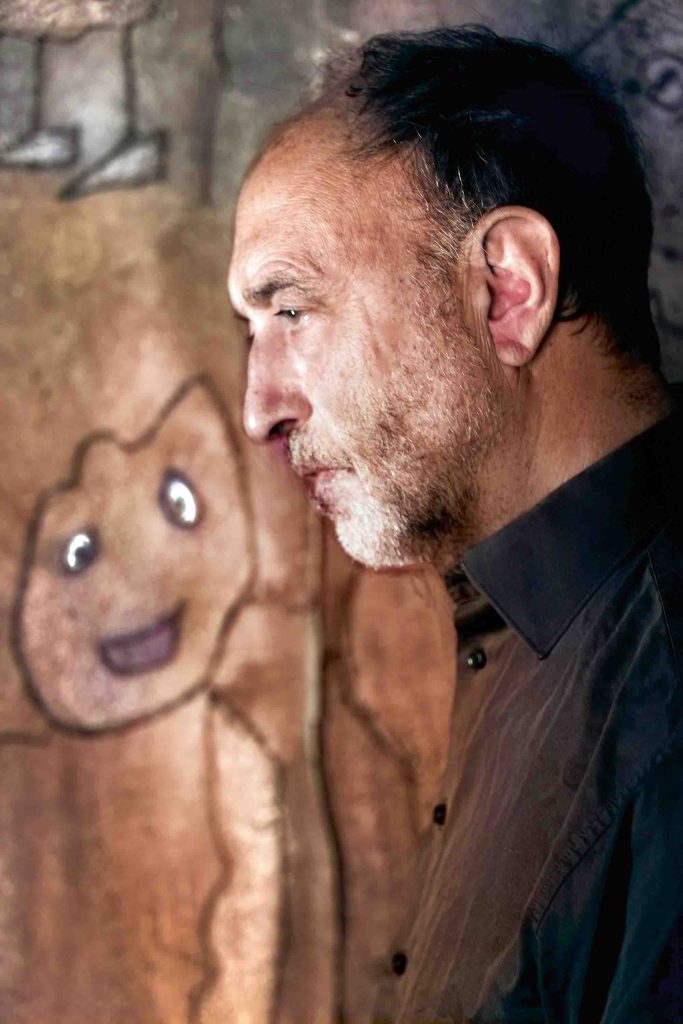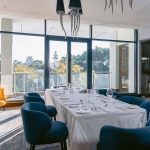Inside Out Centre for the Arts:
Inside Roger Ballen’s Psychological Playground

Perched along the bustling thoroughfare of Jan Smuts Avenue, amid the leafy northern suburbs of Johannesburg, stands a striking concrete edifice—an architectural statement that immediately captivates the eye. Founded by the renowned South African artist Roger Ballen, the Inside Out Centre for the Arts has become a must-visit cultural landmark, offering a compelling space for artistic and intellectual engagement. Since opening to the public in mid-2022, the Centre has established itself as a dynamic hub for dialogue and creative inquiry in this city.
A non-profit institution, the Centre is dedicated to examining African-related issues through immersive, multimedia exhibitions and educational initiatives. It serves as the headquarters of the Inside Out Centre Trust, collaborating closely with the Swiss-based Eiger Foundation. It is situated among Johannesburg’s foremost cultural institutions, alongside the Johannesburg Contemporary Arts Foundation and the Johannesburg Holocaust and Genocide Centre.
Ballen, widely recognised for his psychologically charged and provocative aesthetic, has spent decades redefining the photographic medium. His approach moves beyond traditional documentary photography, transforming the camera into a tool for introspective and psychological exploration, where the subconscious, dreams, and primal instincts take precedence.

The Inside Out Centre encapsulates this philosophy, its very name reflecting the desire to externalise the internal—to render visible the hidden recesses of the mind. This “inside-outness” pervades the Centre’s curatorial approach, where exhibitions challenge conventional perspectives, disrupt entrenched ways of seeing, and embrace the unexpected. The works displayed here align with surrealism, art brut, and outsider art, resulting in a disorienting, dreamlike, and immersive experience.
Ballen’s distinct artistic vision is also embedded in the architecture of the building, which draws inspiration from Brutalist and Industrial design, reminiscent of Johannesburg’s inner city. The exterior appears as a monolithic structure, enclosed by an undulating fence that sparks curiosity. Concrete surfaces—both inside and out—cultivate a sense of ambiguity, blurring the boundary between interior and exterior. “I sometimes think that the building looks as though it has been turned ‘inside out,’” Ballen remarks, reflecting on the spatial dynamics he developed alongside architect Joe van Rooyen of JVR Architects.
A curving ramp leads visitors toward a discreet entrance, evoking a sense of intrigue and discovery. Once inside, the space reveals its layered complexity—a long ramp guides visitors inward, directing them into a cantilevered volume that seemingly floats above a sunken courtyard. The main exhibition space, dominated by a suspended barrel, elicits multiple associations—it recalls a grain silo, a futuristic pod, or, most fittingly, a canister of film, a subtle nod to Ballen’s photographic practice.
Among the Centre’s standout exhibitions is “End of the Game”, an exploration of Africa’s fraught relationship with wildlife and conservation. The exhibition examines the legacy of early twentieth-century hunting safaris, presenting a striking collection of historical objects, texts, and archival imagery. Visitors enter through a documentary section on the upper level, where taxidermy, vitrines filled with ammunition and ivory, and vintage movie posters set the stage for a narrative of conquest and exploitation. A reconstructed hunter’s room showcases stark colonial-era photographs, including portraits of figures such as Winston Churchill and Theodore Roosevelt, proudly posed beside their trophies.
Descending into the innermost chamber of the building, visitors encounter a dreamscape—Ballen’s large-scale installation. Visitors move from the realm of historical record upstairs into the disquieting subconscious below, where logic dissolves into delirium, mirage, dreams, and nightmares. This theatrical environment blends photographs, taxidermy, and assemblage, creating a haunting, immersive spectacle. Hybrid creatures, artificial and real animals, and human figures populate the scene: a man with detached feet aims a rifle at a bird, while a chained serval and a caged lion cub sit beside a bedridden hunter. Hyenas scramble up the walls, an aardvark and an anteater appear locked in silent dialogue, and a baboon, crouched inside a telephone booth, seems to be making a call.
The exhibition resonates deeply with those planning a safari, a quintessential experience for many travellers in South Africa. However, rather than reinforcing conventional notions of wildlife tourism, it compels visitors to reconsider humanity’s relationship with the natural world. “A central challenge in my career has been to locate the animal in the human being and the human being in the animal,” Ballen explains. “The rooms that I photograph represent the conflictual relationship between civilisation and nature, where opposites attract and break apart in a world built not on logic, but on irrationality.”
Adjacent to the Inside Out Centre of the Arts, a new space is developing: the Roger Ballen Centre for Photography, set to open in September 2025. Unlike the semi-permanent End of the Game exhibition at the Inside Out Centre, the new venue will host shorter, more frequent exhibitions, showcasing a diverse range of photographic and artistic practices by both emerging and established creatives.
Expanding on the Inside Out Centre’s mission, the new centre will feature work across documentary, fashion, fine art, and experimental photography, as well as projects that integrate video, mixed media, and installation art—provided that photography remains central. By inviting photographers, artists, and curators to submit proposals, the Centre aims to support original, conceptually strong, and visually striking exhibitions. With a focus on curatorial experimentation and artistic dialogue, it will become a hub for contemporary photography, where new voices and established practitioners alike can engage with audiences in a fresh and evolving artistic environment.

Whether one is a seasoned art connoisseur or a first-time visitor, the Centre is a captivating destination within Johannesburg’s cultural landscape. Whether drawn in by its architectural intrigue, thought-provoking exhibitions, or immersive installations, visitors are certain to leave hypnotised and haunted, with a new perspective on the intersection of art, history, and human experience.
FAST FACTS & TIPS:
- The Inside-Out Centre is open by appointment Monday to Friday from 10.00 am – 4.00 pm and is closed on weekends and public holidays.
- Children under 14 are not allowed to enter the gallery as some of the subject matter may be frightening to younger patrons.
- The Centre charges a small entrance fee of R150 per person for unlimited viewing pleasure.
- The Centre also hosts talks, live music and various events. Keep an eye on their socials to stay updated on the next one!
CONTACT DETAILS
www.insideoutcentreforthearts.com



